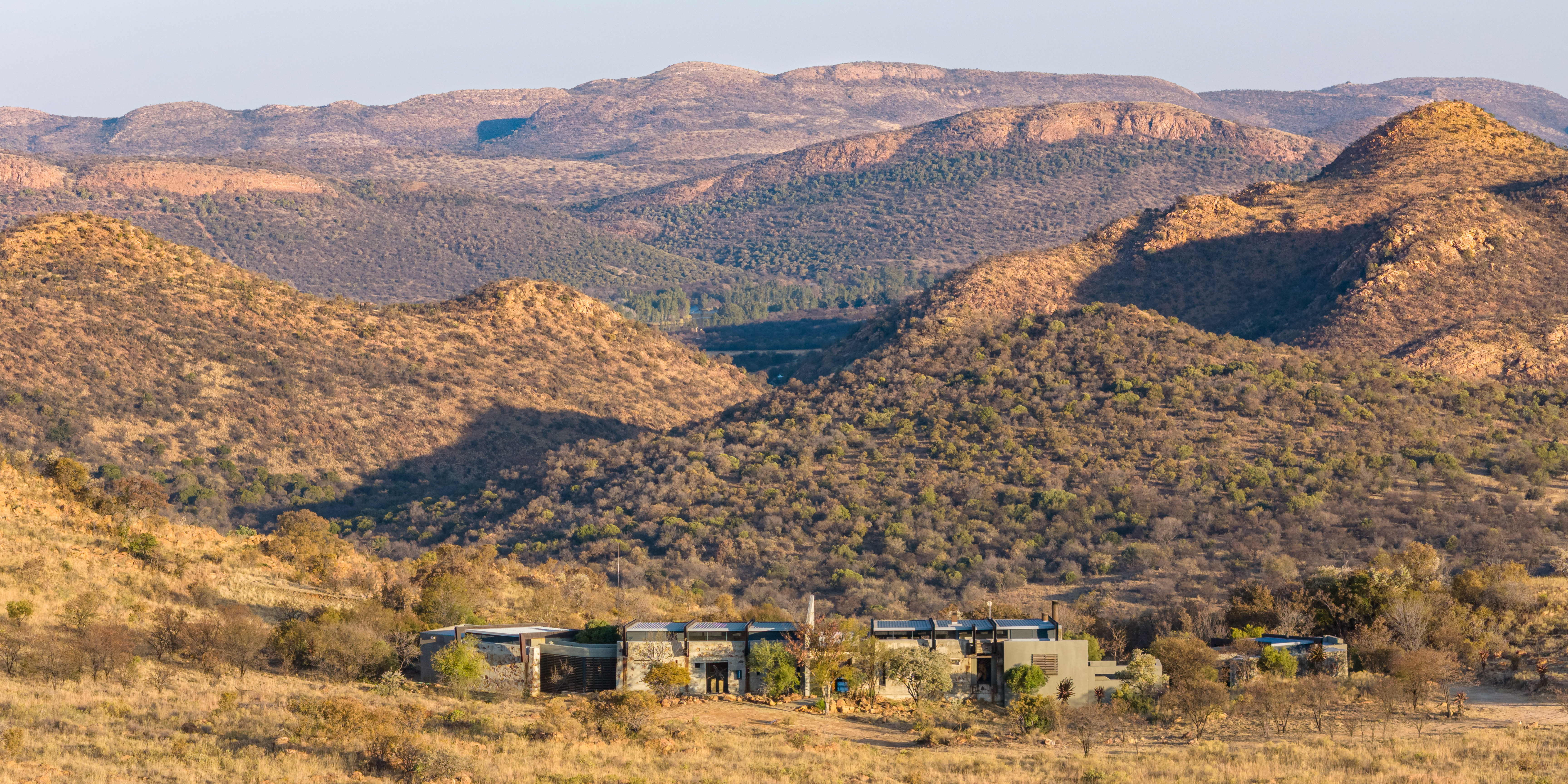


Misverstand lies on the outer edge of the rugged Vredefort Mountainland, a 100 km long crescent of ridges and deep valleys that encirle the heart of the Vredefort Dome. The unique landscape has a threefold origin, starting with the violent upheaval that formed the dome 2020 million years ago when a 15 km diameter asteroid slammed into Earth’s crust 25 km to the southeast, releasing an energy equivalent to more than 100 million megatons of TNT and forming a 250-300 km crater. Traces of the shock wave that spread out from the impact can be seen in the distinctive shatter cones in the rock outcrops. Unusual melt rocks, called pseudotachylite, also abound along faults caused by the impact that produced the jumbled nature of the rock outcroppings on Misverstand.
Violent movements of the crust below and immediately around the point of impact caused a massive rebound that formed the dome. Subsequent erosion, including the giant Dwyka ice sheet 300 million years ago when southern Africa was located close to the South Pole, removed most of the evidence of the crater but the deep roots of the dome remain. The serried ridges and valleys seen from the Lodge represent the differential erosion of shale and sandstone layers sculpted by the ice sheet and now being further modified by the Vaal River and its tributaries.
However, the story of Misverstand does not actually start with the impact, but nearly a thousand million years earlier, when the muds and sands that solidified into those rock layers were being laid down along a seashore on the edge of our proto-continent, the Kaapvaal craton. When our continent collided with a second continent to the northwest approximately 2900 million years ago, a large mountain range formed that immediately began to erode. Rivers carried the coarse sand and gravel towards the sea, together with small gold particles eroded from the mountains. Over the next hundred million years, these processes created the world’s greatest gold deposit. Misverstand Lodge is located on the youngest of these gold-bearing conglomerate layers which still preserve the pebbles swept down by the rivers. Gold is undoubtedly present as well, but is not of sufficient economic grade for mining.
After the gold and the impact, the third geological wonder of Misverstand is the outpouring, 2796 million years ago, of immense volumes of basaltic lava that terminated the era of gold deposition. The basalts extend from the northern part of the property beneath the Tygerfontein Valley, noted for its rich red soils that are derived from the weathering of the basalts. Basalt outcrops display shatter cones but also amygdales – quartz-filled cavities in the rock that represent fluid bubbles that were trapped in the basalt magma as it solidified.
Guest blog by Professor Roger Gibson (Professor of Geosciences)
Guest blog by Professor Roger Gibson (Professor of Geosciences)
Unwind in Luxury
Imagine discovering a serene haven of luxury amidst the captivating bushveld, where breathtaking landscapes, abundant wildlife and warm hospitality create an extraordinary escape in the Vredefort Dome area.


